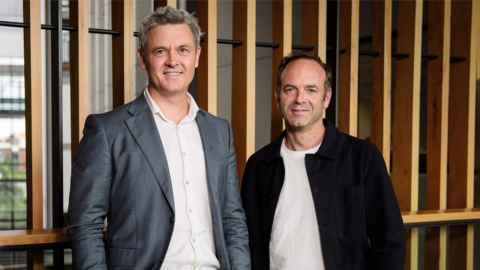Cancer research project sparks unexpected collaboration
21 October 2021
A cancer patient’s desire to donate her tumours to medical research has sparked a unique multi-disciplinary project that could potentially reshape the future of healthcare.

“The ultimate aim of this project is to change the way we think about cancer evolution,” says Dr Ben Lawrence, Head of Oncology at the Faculty of Medical and Health Sciences, who led the team of pathologists that removed 89 cancer spots from the patient’s body within hours of her death.
The goal was to gene sequence each tumour and create a map showing how the cancer had spread and changed – a fundamental problem for cancer treatment worldwide. However the daunting prospect of assimilating many terabytes of complex genomic data using traditional two dimensional techniques forced a rethink.
Having initially approached Dr Michael Davis at the School of Architecture and Planning with the idea of creating a video fly-through, Dr Lawrence accepted that the concept had no architectural merit. “The medium that was originally proposed was not going to demonstrate the richness of the information or do the patient justice,” says Dr Davis.
Describing it as akin to a ‘Ford moment’, when a farmer is offered a motor vehicle rather than a faster horse, Dr Davis says the idea of using augmented reality (AR) to illustrate the progression of the cancer was “like science fiction becoming science fact”.
Using Microsoft HoloLens 2 visualisation technology, two or more people in different locations can discuss the multiple layers of digital information embedded within a 3D model of the patient’s body. For Dr Lawrence, using AR creates a really intimate interaction that reminds him of his patient “so it’s a quite vivid and emotional connection”.
While medicine and architecture have historically shared a close relationship, the involvement of technology and coding experts from the Centre for e-Research made it a three-way collaboration. “What’s fast becoming part of our mandate,” says Dr Davis, “is how people interact with lots of data in space – developing a spatial interface for a very rich data environment.”
PhD student Tamsin Robb is one of around 20 people involved in the project and says the AR model also creates a ‘common language’ that overcomes difficulties associated with cross-disciplinary conversations. “When we can come together with such a visual representation as an index to all this data, we can start to make connections that we could not make without that tool.”
The initial focus was to produce a prototype AR application to enhance understanding of patient data, however a blueprint now exists to potentially develop interactive tools that could transform how clinicians and patients visualise and discuss their disease and treatment.
Given that health literacy is a big determinant of a patient’s journey, Dr Lawrence says that the ability to pop on a headset and show ‘before and after’ CT scans will help people understand what they’re dealing with “and that’ll change their cancer journey”.
The next phase of research has yet to be determined, but one possibility is to explore whether researchers from different countries could enter the model as avatars of themselves in order to interact with it – a potentially useful option in a post-Covid world where travel is restricted.
Currently funded by a $150,000 grant from the Health Research Council, the project was kickstarted by an anonymous financial donor who shares “the same mission” – to improve cancer outcomes for people. “The donor knows where our heart is,” says Dr Lawrence, who adds that the research would not have been possible without philanthropic support because it was so creative and novel.
“The novelty of it was facilitated by having an understanding with our donor to think in new ways about old problems that have to be solved for us to improve cancer care.”
Media contact
Helen Borne | Communications Manager
Alumni Relations and Development
Email: h.borne@auckland.ac.nz